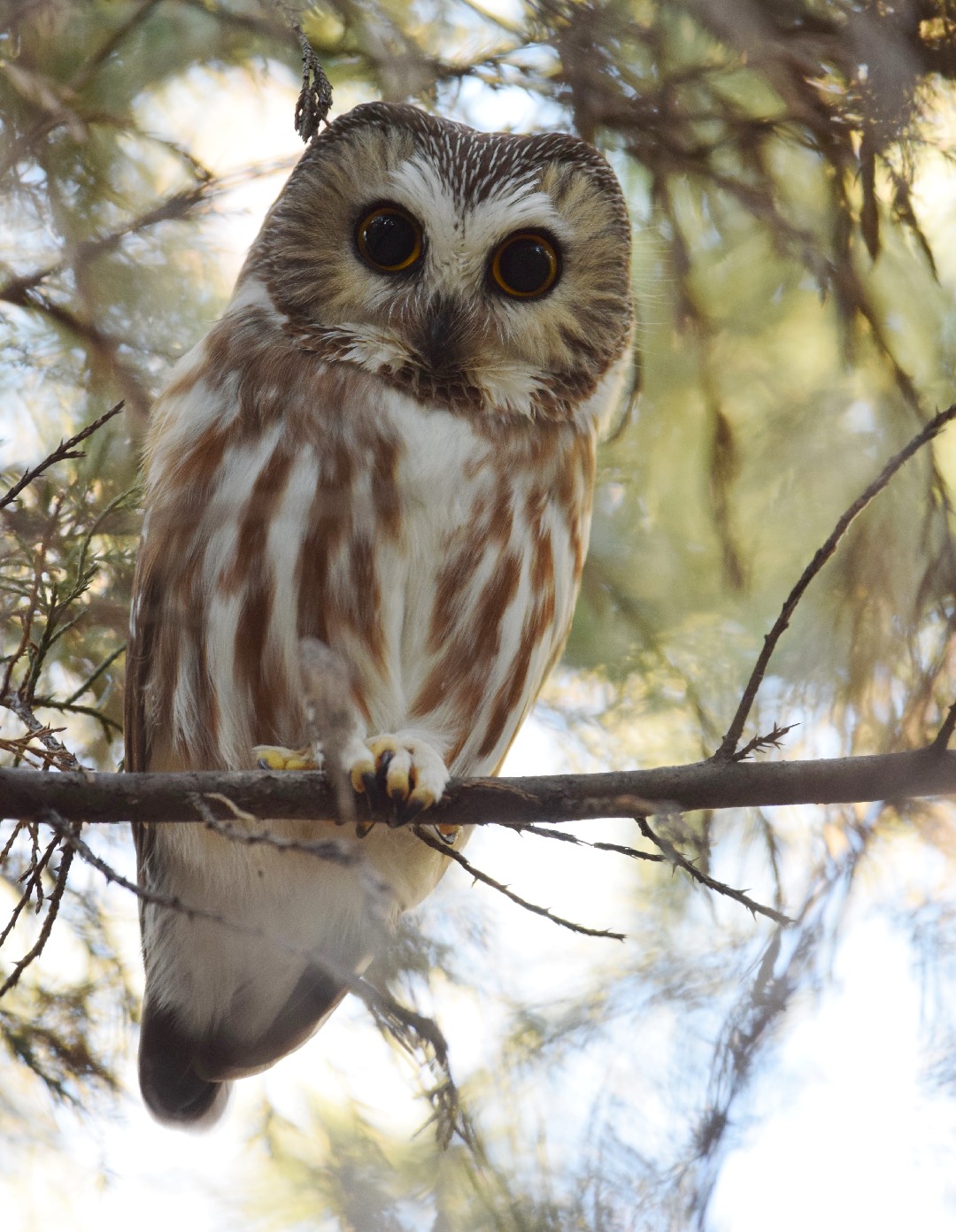Northern Saw-whet Owl
A species of Saw-whet Owls, Also known as White-fronted Owl, Sparrow Owl, Saw-filer Scientific name : Aegolius acadicus Genus : Saw-whet Owls
Northern Saw-whet Owl, A species of Saw-whet Owls
Also known as:
White-fronted Owl, Sparrow Owl, Saw-filer
Botanical name: Aegolius acadicus
Genus: Saw-whet Owls
Content
Description People often ask General Info
 Photo By Andy Reago & Chrissy McClarren , used under CC-BY-2.0 /Cropped and compressed from original
Photo By Andy Reago & Chrissy McClarren , used under CC-BY-2.0 /Cropped and compressed from original Description
The northern Saw-whet Owl is one of the smallest owls in the world; however, it's a fierce predator that feasts on insects, rodents, and small mammals. It's often perceived as tame, due to the fact that it stands still and doesn't fly away when approached. This behavior is actually its best defense mechanism - the northern Saw-whet Owl is trying to camouflage in order to hide from a potential predator.
Size
18 - 22 cm
Life Expectancy
16 years
Nest Placement
Cavity
Clutch Size
4 - 7 eggs
Incubation Period
1 - 2 broods
Number of Broods
26 - 29 days
Nestling Period
27 - 34 days
Feeding Habits
Northern Saw-whet Owl primarily prey on small mammals like mice and voles, but also consume shrews, bats, and juvenile larger mammals. Supplementing their diet, northern Saw-whet Owl hunt small birds, particularly during migration, and may consume larger avians occasionally. Coastal northern Saw-whet Owl may eat crustaceans and other invertebrates. Insects and amphibians are also part of their varied diet. Males provide food during the female's incubation and brooding period.
Habitat
Northern Saw-whet Owl's prime habitats are North American coniferous forests, mixed woods, and deciduous forests, favoring areas with open understories for foraging and dense conifers for roosting. They adapt to various elevations, from sea level to mountainous regions, and during winter, they reside in dense forests throughout much of the United States, absent only in the far south.
Nest Behavior
Females of northern Saw-whet Owl, with occasional male assistance, select the nesting site. They lay eggs directly atop cavity debris and don't construct traditional nests. Egg-laying and parental care patterns coincide with seasonal breeding routines, as is common in owl species.
Nest Characteristics
Northern Saw-whet Owl typically nest in pre-excavated cavities often made by other birds like Northern Flickers or Pileated Woodpeckers. Nests are 8–44 feet above ground, with the cavity approximately 3 inches wide and 9–18 inches deep, and an entrance around 2–3 inches. They use debris for lining but don't add new material.
Dite type
Carnivorous
People often ask
General Info
Feeding Habits
Bird food type
Bird Feeder Type

Platform
Behavior
Northern Saw-whet Owl's general behavior includes both solitary and social aspects. They typically roost during the day in dense conifers, often camouflaged near foliage at branch tips, averaging 11 feet off the ground. Despite their elusive nature, they can be betrayed by the aggregation and alarm calls of smaller birds. Monogamous by tendency, northern Saw-whet Owl exhibit polygynous traits when prey is ample, with males attracting females through a distinctive too-too-too call and presenting caught prey as part of their courtship. They reestablish pairings annually, even though some may maintain territories year-round. Vigilance is key, as northern Saw-whet Owl are targeted by larger raptor species.
Species Status
Not globally threatened.

 Photo By Andy Reago & Chrissy McClarren , used under CC-BY-2.0 /Cropped and compressed from original
Photo By Andy Reago & Chrissy McClarren , used under CC-BY-2.0 /Cropped and compressed from original Scientific Classification
Phylum
Chordates Class
Birds Order
Owls Family
True owls Genus
Saw-whet Owls Species
Northern Saw-whet Owl